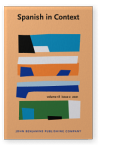Vol. 18:2 (2021) ► pp.257–284
Remapping variable subject position in Spanish intransitives
A proposal for functionally defined categories in motion verbs
In Spanish, a SVO language with variable word order, post-verbal subjects have been proposed to be favored for particular verb categories. For instance, based on agentivity, unaccusatives are proposed to favor VS as a whole. Motion verbs are regarded as unaccusatives generally favoring VS order. An alternative analysis is presented here, using data from two conversational corpora. Motion verbs are recategorized based on their predicted tendency to include adverbials in the sentence and compared with other unaccusatives. Motion verbs are divided according to their Deictic Function (Talmy 2000) into “come” verbs (i.e., “motion-toward-the-center,” that is, the speaker), and “go” verbs. “Come” verbs do not often require target specification through an adverbial, whereas “go” verbs do. Adverbials were found to appear as post-verbal path specification in “go” verbs; due to weight factors, such specifiers favor pre-verbal subjects. Importantly, even when no modifier is present, trends persist, suggesting entrenchment of usage patterns.
Article outline
- 1.Introduction
- 1.1A function-driven approach to the study of variability in Spanish subject position
- 1.2A functional approach for a classification of motion verbs
- 1.3Hypotheses
- 2.Methods
- 2.1Corpus data
- 2.2Circumscribing the envelope of variation
- 2.3Linguistic variables
- 2.3.1Measuring contextual accessibility of the subject: Referential distance
- 2.3.2Definiteness of the subject
- 2.3.3Other constituents within the sentence: Adverbial expressions
- 2.3.4Verb type
- 3.Results and discussion
- 3.1Communicative functions and verb modifiers
- 3.2Specification, weight factors and their effect on subject position
- 3.3Evidence of conventionalization of frequent usage patterns
- 4.Conclusion
- Notes
-
References
